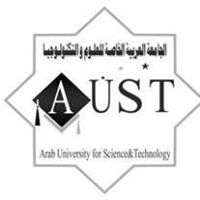اشترك بالحزمة الذهبية واحصل على وصول غير محدود شمرا أكاديميا
تسجيل مستخدم جديدExtended Rindler Spacetime and a New Multiverse Structure
60
0
0.0
(
0
)
اسأل ChatGPT حول البحث

ﻻ يوجد ملخص باللغة العربية
This is the first of a series of papers in which we use analyticity properties of quantum fields propagating on a spacetime to uncover a new multiverse geometry when the classical geometry has horizons and/or singularities. The nature and origin of the multiverse idea presented in this paper, that is shared by the fields in the standard model coupled to gravity, is different from other notions of a multiverse. Via analyticity we are able to establish definite relations among the universes. In this paper we illustrate these properties for the extended Rindler space, while black hole spacetime and the cosmological geometry of mini-superspace (see Appendix B) will appear in later papers. In classical general relativity, extended Rindler space is equivalent to flat Minkowski space; it consists of the union of the four wedges in (u,v) light-cone coordinates as in Fig.(1). In quantum mechanics, the wavefunction is an analytic function of (u,v) that is sensitive to branch points at the horizons u=0 or v=0, with branch cuts attached to them. The wavefunction is uniquely defined by analyticity on an infinite number of sheets in the cut analytic (u,v) spacetime. This structure is naturally interpreted as an infinite stack of identical Minkowski geometries, or universes, connected to each other by analyticity across branch cuts, such that each sheet represents a different Minkowski universe when (u,v) are analytically continued to the real axis on any sheet. We show in this paper that, in the absence of interactions, information doesnt flow from one Rindler sheet to another. By contrast, for an eternal black hole spacetime, which may be viewed as a modification of Rindler that includes gravitational interactions, analyticity shows how information is lost due to a flow to other universes, enabled by an additional branch point and cut due to the black hole singularity.
قيم البحث
اقرأ أيضاً
We find exact formulas for the Extended Uncertainty Principle (EUP) for the Rindler and Friedmann horizons and show that they can be expanded to obtain asymptotic forms known from the previous literature. We calculate the corrections to Hawking tempe
rature and Bekenstein entropy of a black hole in the universe due to Rindler and Friedmann horizons. The effect of the EUP is similar to the canonical corrections of thermal fluctuations and so it rises the entropy signalling further loss of information.
We investigate the relation between the time-ordered vacuum correlation functions for interacting real scalar fields in Minkowski spacetime and in the Rindler wedge. The correlation functions are constructed perturbatively within the in-in formalism,
often employed in calculations in more general spacetimes. We prove to all orders in perturbation theory that the time-ordered vacuum correlation functions can be calculated in the in-in formalism with internal vertices restricted to any Rindler wedge containing the external points. This implies that the Minkowski in-in (or in-out) perturbative expansion of the vacuum correlation functions is reproduced by the Rindler in-in perturbative expansion of these correlators in a thermal state at the Unruh temperature.
We study scenarios of parallel cyclic multiverses which allow for a different evolution of the physical constants, while having the same geometry. These universes are classically disconnected, but quantum-mechanically entangled. Applying the thermody
namics of entanglement, we calculate the temperature and the entropy of entanglement. It emerges that the entropy of entanglement is large at big bang and big crunch singularities of the parallel universes as well as at the maxima of the expansion of these universes. The latter seems to confirm earlier studies that quantum effects are strong at turning points of the evolution of the universe performed in the context of the timeless nature of the Wheeler-DeWitt equation and decoherence. On the other hand, the entropy of entanglement at big rip singularities is going to zero despite its presumably quantum nature. This may be an effect of total dissociation of the universe structures into infinitely separated patches violating the null energy condition. However, the temperature of entanglement is large/infinite at every classically singular point and at maximum expansion and seems to be a better measure of quantumness.
We investigate geometrical properties of 5D cylindrical vacuum solutions with a transverse spherical symmetry. The metric is uniform along the fifth direction and characterized by tension and mass densities. The solutions are classified by the tensio
n-to-mass ratio. One particular example is the well-known Schwarzschild black string which has a curvature singularity enclosed by a horizon. We focus mainly on geometry of other solutions which possess a naked singularity. The light signal emitted by an object approaching the singularity reaches a distant observer with finite time, but is infinitely red-shifted.
This work is essentially a review of a new spacetime model with closed causal curves, recently presented in another paper (Class. Quantum Grav. textbf{35}(16) (2018), 165003). The spacetime at issue is topologically trivial, free of curvature singula
rities, and even time and space orientable. Besides summarizing previous results on causal geodesics, tidal accelerations and violations of the energy conditions, here redshift/blueshift effects and the Hawking-Ellis classification of the stress-energy tensor are examined.
سجل دخول لتتمكن من نشر تعليقات
التعليقات
جاري جلب التعليقات


سجل دخول لتتمكن من متابعة معايير البحث التي قمت باختيارها


